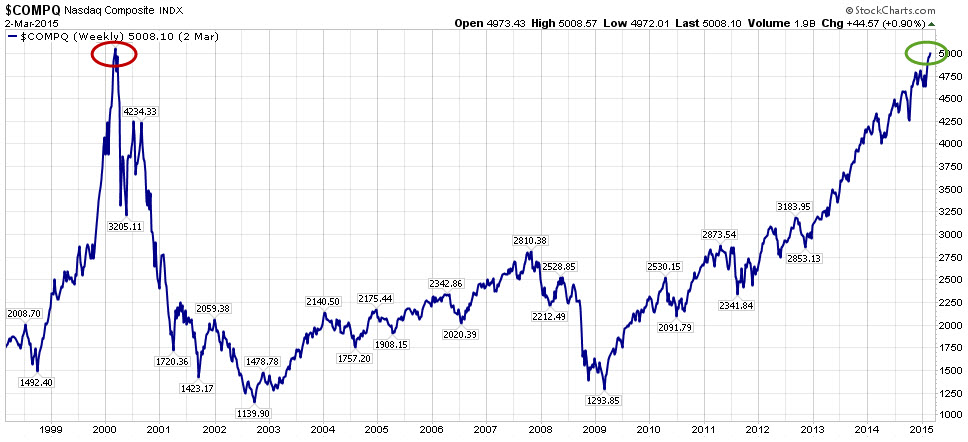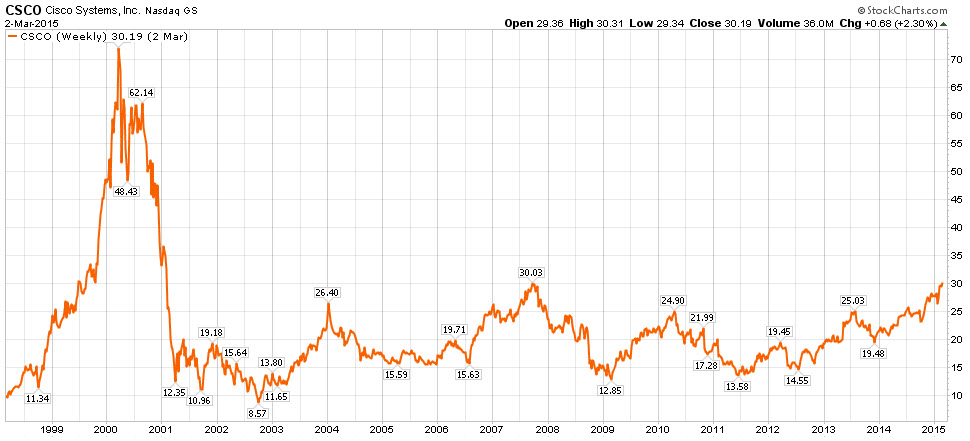Dust Off Those Year 2000 Party Hats !
It seems hard to remember all these years later, but March of 2000 was a time of pure euphoria in the U.S.. equity markets and especially in the technology sector. The poster child for the times was the NASDAQ Composite Stock Index, which included almost all of the leading technology companies of that era. This index had just crossed the 5000 mark in early March of 2000, and the big question on Wall Street was how long would it take this index of leaders to cross the next big round number of 6000. The overwhelming consensus was that it would not take long, especially considering that it had only been less than 3 months since the NASDAQ had crossed 4000. It was an unbelievable run for sure, but a party that was about to end badly.
In less than 3 years, this index would tumble 78%, wiping out years of gains and changing the technology investment conversation forever. As for the question of when the NASDAQ will hit the 6000 mark, well we still don't know the answer to that one. You can see in the blue line graph below that just recently, almost exactly 15 YEARS later, the index finally crossed above the 5000 mark again for the first time, with the red circle marking March of 2000 and the green circle marking March of 2015. Even more amazing is the orange line graph below, which shows the long term price history of Cisco Systems, one of the most widely held and most successful tech stocks of the late 1990s. Today Cisco is still a financially healthy and vibrant technology company, but you can see that 15 years later its stock is trading at less than half of its value in early 2000.
As investors celebrate the return of NASDAQ 5000 after 15 years, what are the key lessons to keep in mind from this experience? Of course there are many answers to that, but two key points seem to stand out:
1. Ignore the Noise - We were bombarded with market predictions by the media back in 2000 and things are so much more noisy today than in the past. It is so tempting to get caught up in very believable projections of NASDAQ 6000 or Crude Oil at $200 per barrel, but the truth is that no one knows for sure what next week, month or year will bring us in any major global market category. Some predictors will occasionally be right and will gain temporary credibility for that, but so many of them will be wrong most of the time. Remember it this way - When everyone is asking the same question, it is probably the wrong question.
2. Stay Flexible - The herd mentality in the late 90s had investors selling everything else they owned and plowing it into tech stocks. That can all be very exciting right up until the party ends, and they all end eventually. Remember that everything moves in cycles, and it is very important over time to have enough flexibility to adjust to those cycles as they take place. Fifteen years ago it seemed like investing in anything but technology put you out of touch with the 'new era' of investing, and if you did not hold Cisco in your portfolio, you were doomed to sub-par returns. You see below how a lack of flexibility on those two widely held beliefs at the time worked out.
At RiverTree, we ignore the noise and stay flexible by using statistical and technical indicators that help identify trend changes, supply/demand imbalances, leading and lagging classes and sectors, and relative strength leaders. This type of approach completely ignores the noise by not paying any attention to it, and allows for tremendous flexibility if the the indicators are monitored and followed on a regular basis. We use these tactics in both our mutual fund and ETF allocations, and they have served our clients well over time.
Hope that was helpful and we'll be back in touch again soon!


Need some advice?
We're here to help. Get in touch with us and we'll do our best to guide you in the right direction.

